PARAGLIDING GLIDERS: CHOOSING THE RIGHT EQUIPMENT

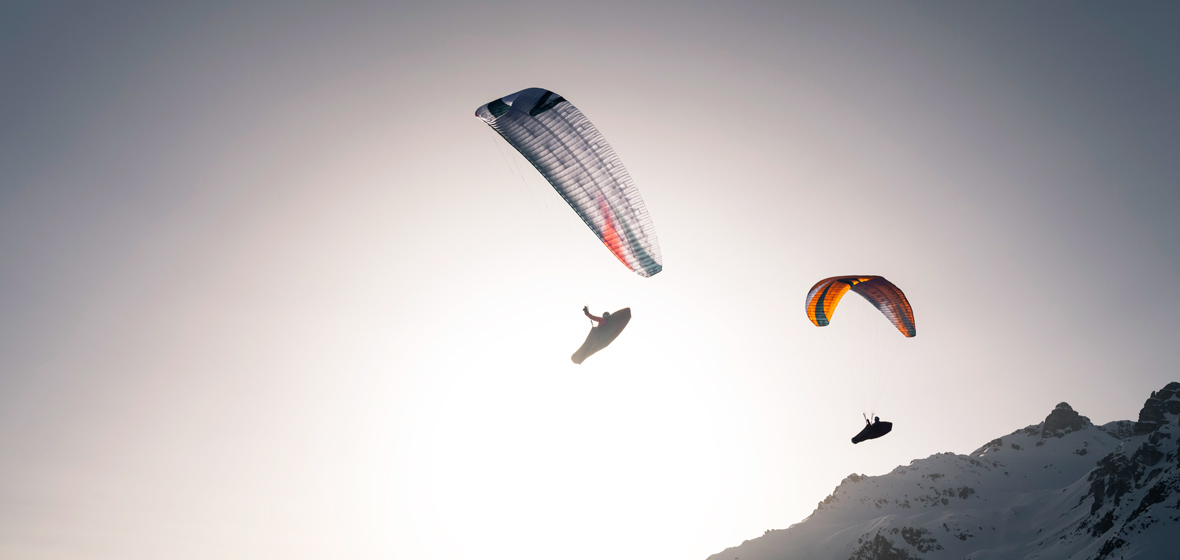
Our guide will help you explore the different types of paraglider available, the selection criteria to consider so you can be sure you're choosing the right glider, and we'll also look at the average price of paragliders.
Whether you're a beginner or an experienced paraglider pilot, choosing the right paraglider is essential to ensure your safety and maximize your flying pleasure. EN B paragliders are particularly suited to intermediate pilots, offering a balance between performance and stability. In this guide, we'll explore the different types of paraglider available, the criteria to consider when choosing your glider, as well as the best-performing options on the market and their average cost.
WHAT TYPES OF PARAGLIDER GLIDER ARE THERE ?
There are many different types of paraglider. These are generally classified by certification. These include EN A, EN B, EN C, EN D and CCC gliders. Each of these gliders offers a different piloting experience and is aimed at different paragliding profiles.
They will be described in more detail later in this guide.
HOW TO CHOOSE THE RIGHT PARAGLIDER ?
When choosing a paraglider, there are a number of important factors and details to consider, including your level of flying ability, the price and range of the wing, and how you intend to use it.
All these aspects are important, because a wing is adapted to a specific type of pilot.
Choosing paragliders according to level
There are several criteria you can use to classify wings, but the best known and surely the most meaningful of all for paragliders is the paraglider certification category. These categories define their level of passive safety, and generally the wing's performance follows. Wings are classified from A to CCC in the following order:
EN A :
A wing for beginner pilots, these wings offer the best compromise in terms of passive safety. For landing and take-off, EN A wings are ideal for paragliders who are just starting out, enabling them to fly in complete safety while retaining the thrill of the action.
EN B :
Balanced wing offering the best compromise between safety and performance. These wings are best suited to pilots with a minimum of experience. This wing is ideal for perfecting your skills in the air, and for continuing to progress serenely.
EN C :
These wings are starting to perform better than the two previous categories, but this is beginning to be at the expense of the wing's passive safety. This is due to the wing's increasing aspect ratio.
EN D and CCC :
EN D-rated wings offer even greater performance. The CCC class is reserved for highly experienced pilots. This is the type of wing used by professionals in competitions. They go fast, they go far, but they require precise, almost permanent piloting.
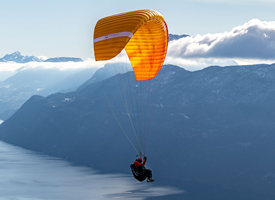
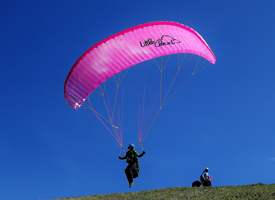
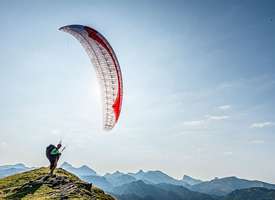
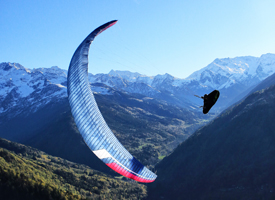
Paragliders are classified into different categories according to their level of performance and safety. EN B paragliders belong to the intermediate category and are designed for pilots with flying experience. They offer greater stability than EN A wings, while retaining good handling and performance.
Other wing categories include EN A paragliders for beginners, EN C paragliders for experienced pilots, and EN D paragliders for experienced pilots looking for top performance. Each category has its advantages and limitations, so it's important to choose according to your level of piloting and your flying objectives.
Choosing paragliders according to your flying style
Here it's a question of choosing the characteristics of your wing according to your flying objectives. Here are a few points to consider :
Hiking flights, mountain flights, alpine flights etc...
For mountain flying, the aim is to choose wings that are light and pleasant to fly.The aim here is not necessarily flight performance, but rather compactness and reduced weight, so that the glider takes up as little space as possible in the rucksack and is as light as possible to carry. Ideal for hike-and-fly, these wings are also available in a single-surface version.This means that the wing no longer has a bottom surface. This further reduces the wing's overall weight.
On-site flying
For classic on-site flying, you don't need any specific equipment. Any wing will do, as long as it matches your level and your expectations.
Cross-country flying
For cross-country flying, you'll need a longer wing, light or not. Be careful, as aspect ratio is a very important criterion that can tip your wing from one category to another, so make sure you select a wing at your level.
Speed riding/ Flying and acrobatics
These wings, often unlicensed, or at least only when loaded, are designed for experienced pilots. Small, or even very small, these wings have a flight performance equivalent to that of an iron, are very responsive and require very fine piloting. If you'd like to get started, give us a call. We'll be delighted to advise you.
Choosing paragliders based on price
The price of a paraglider varies according to brand, technology and materials used. Some high-end brands offer higher-performance wings, but they also come at a higher price. It's essential to strike a balance between your budget and the features you're looking for to get the best glider for your needs.

WHAT IS THE BEST PARAGLIDER GLIDER ?
There's no single answer to this question; the best paraglider for you will depend on your specific needs and preferences as a pilot. However, certain brands and models are widely recognized for their quality and performance.
Brands such as Niviuk, Skywalk, Gin Gliders, Neo and Supair are renowned for offering paragliders that are highly appreciated and meet the expectations of both beginners and experienced pilots.
If you have the opportunity, we invite you to come and visit us, so you can take advantage of our flight tests. This will help you make your choice!
Otherwise, don't hesitate to call us for personalized advice.
WHAT IS THE AVERAGE COST OF A PARAGLIDER ?
The average cost of a paraglider is between 2,000 and 5,000 euros. This is a price range, but it's important to note that prices vary according to technical specifications, glider range, brand and any additional options.
Investing in a quality paraglider is an essential choice for your safety and flying pleasure. It's best not to compromise on quality to save money, as your glider will be a long-term investment in your flying adventures.
In conclusion, choosing the right paraglider is a crucial step for all pilots looking to improve their skills and get the most out of their flying. Take into account your flying level, your flying goals and your budget to find the glider that best suits your needs. Don't hesitate to ask around and test different gliders before making your final decision. With the right paraglider, you can enjoy unforgettable flying experiences.








